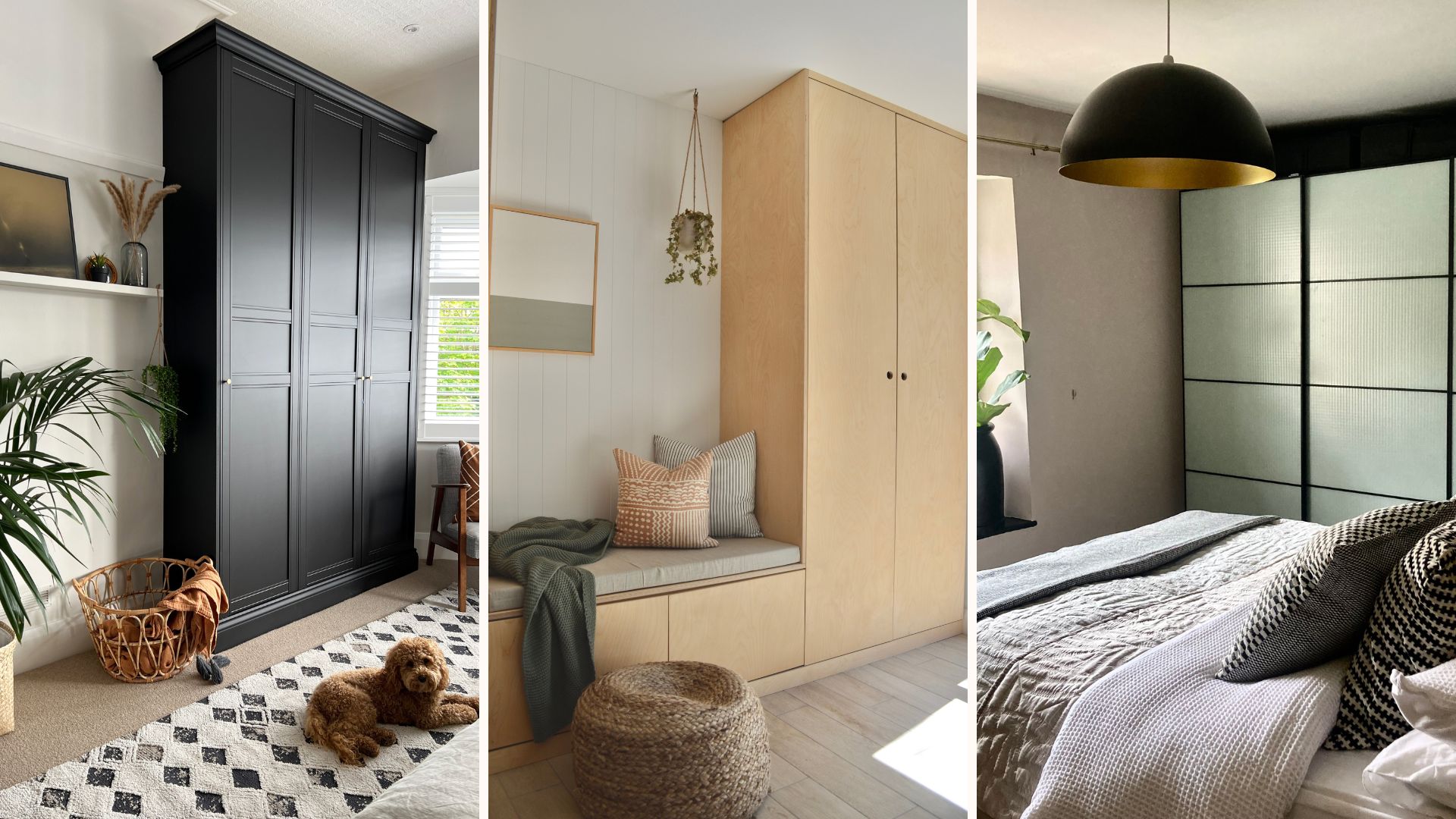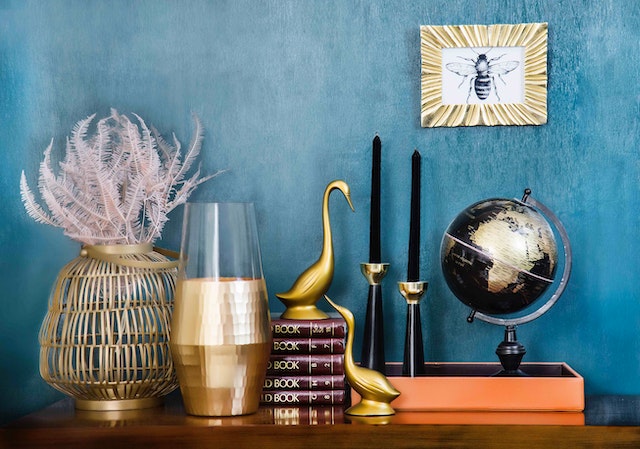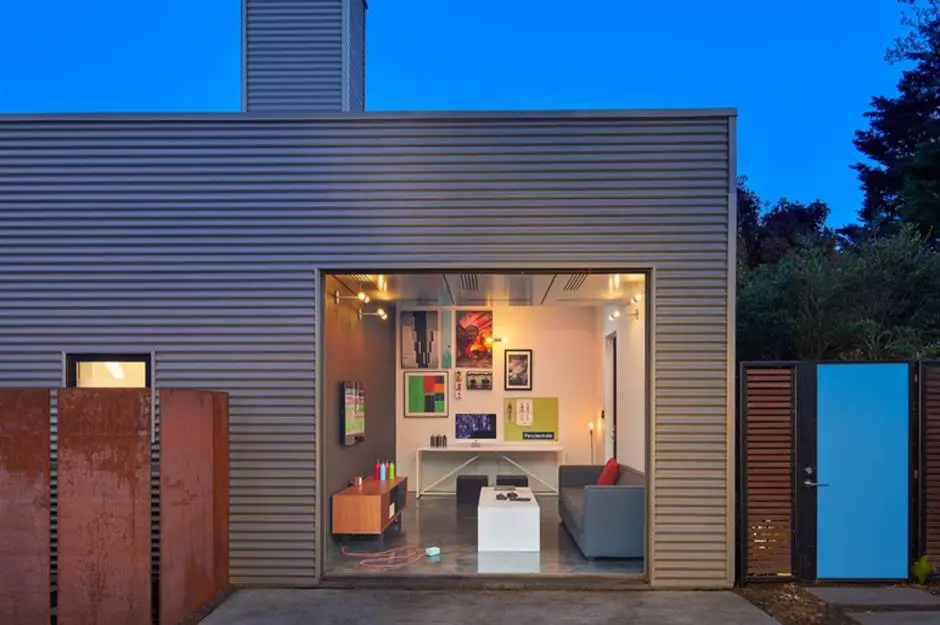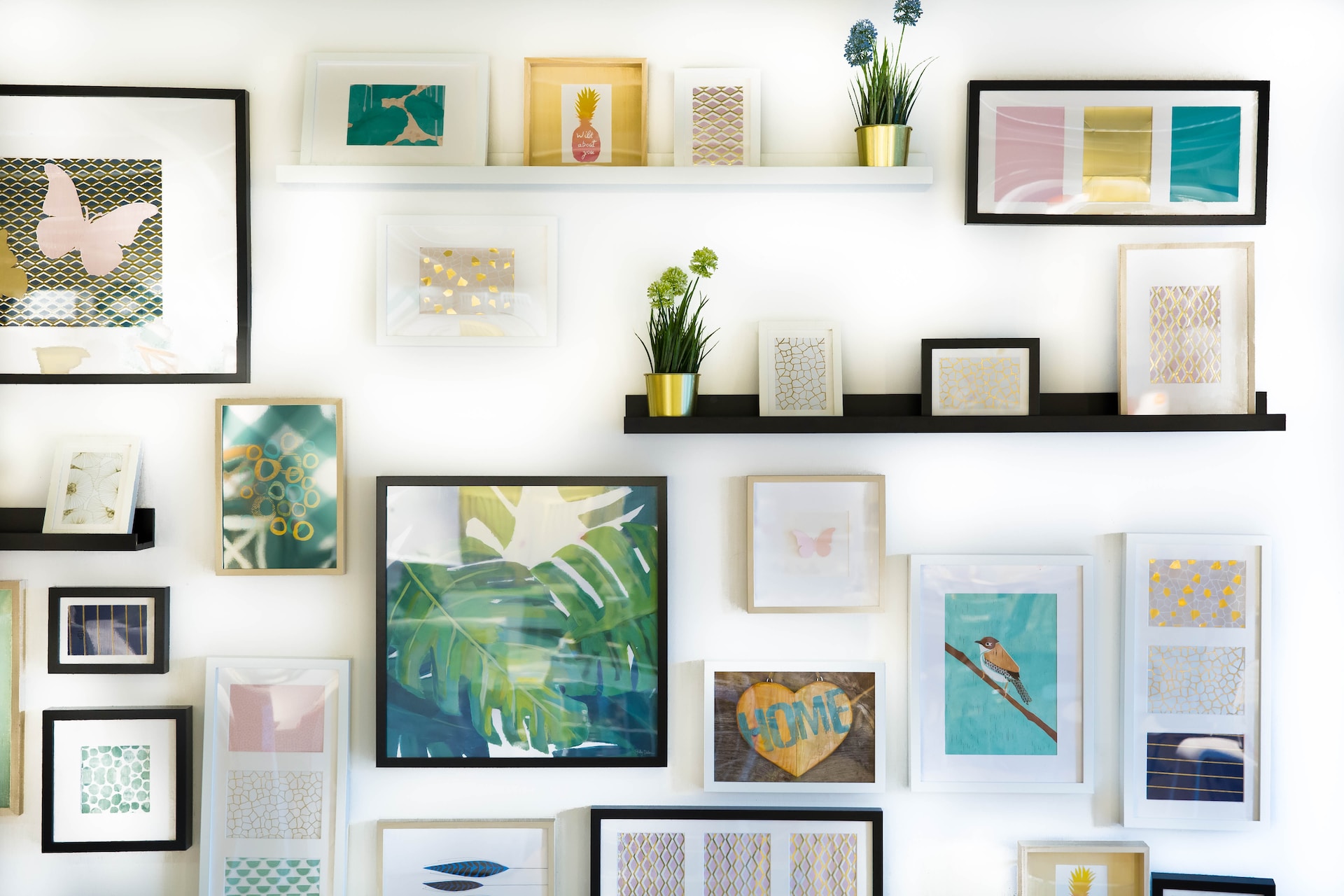Different cultures and design aesthetics inspire several kitchen designs worldwide. I can list 60 kitchen styles from different nations and locations. These are:
Traditional American kitchen
Traditional American kitchens are cosy and nostalgic, with classic design features. This design has detailed cabinets, raised panel doors, and decorative mouldings. Wood and warm colours give cosiness. Storage and organisation are essential. Kitchen islands are meeting places. Vintage lighting and decorations give charm. The typical American kitchen is the centre of the house, embracing family and guests.
Farmhouse kitchen
Farmhouse kitchens are rustic and quaint, evoking a gentler period. Its country-vintage style creates a warm and welcoming ambiance. Farmhouse kitchens are realistic with reclaimed wood, rustic finishes, and open storage. Stone and exposed beams provide an earthy atmosphere. Apron-front, farmhouse, and farmhouse-inspired sinks are popular. Soft, subdued colours and vintage-inspired items like mason jars and antique cutlery enhance nostalgia. The country kitchen design fosters family and friend bonding.
Modern minimalist kitchen:
Modern minimalist kitchens are simple, clean, and elegant. It prioritises utility over excess. This minimalist style emphasises open areas and minimal decoration. Whites, greys, and blacks provide tranquilly and refinement. Minimalist cabinets, handle-less doors, and concealed storage contribute. Stainless steel, glass, and smooth surfaces are preferred. Minimalist kitchens include integrated equipment and efficient organisation methods for clutter-free cooking. Modern minimalist kitchens are great for folks who want clean, simple design.
French country kitchen:
French rural kitchens are charming and rustic. This design blends traditional and sophisticated aspects from rural French residences. Creams, gentle yellows, and subdued blues create a cosy atmosphere. Wood beams, stone flooring, and distressed finishes provide rustic character. Ornate cabinets, moulding, and farmhouse sinks are prevalent. Open shelves, copper accents, and vintage-inspired items enhance authenticity. French country kitchens are cosy, pleasant spaces for cooking and socialising.
Tuscan kitchen:
Tuscan kitchens exude Italian rustic charm. This Tuscany-inspired design blends old-world and Mediterranean features. Warm terracotta, bright yellows, and rich greens create a cosy environment. Stone, wood, and wrought iron enhance the rustic look. Open shelves, beams, and textures provide authenticity. Tuscan kitchens have tile backsplashes, arched entrances, and ornamental tiles. Tuscan kitchens provide timeless beauty and relaxing elegance to the house.
Mediterranean kitchen:
Mediterranean kitchens are bright and cheerful, influenced by Greece, Italy, and Spain. It’s rustic and Mediterranean. Terracotta, sun-kissed yellows, and azure blues create a welcoming ambiance. Stone, clay tiles, and mosaics represent the region’s architecture. Arched doors, exposed beams, and open spaces are typical. Mediterranean kitchens add creativity and vitality with beautiful tiles, wrought iron, and colourful ceramics. Mediterranean kitchens reflect the laid-back lifestyle of seaside living, evoking warmth, hospitality, and nature.
Scandinavian kitchen:
Scandinavian kitchens are simple, efficient, and minimalist. This Nordic-inspired design emphasises natural light, clean lines, and light colours. Whites, soft neutrals, and light woods create a bright, airy environment. Minimalist cabinets, handle-less doors, and open shelves contribute. Scandinavian kitchens are organised and efficient. Wood, stone, and pottery give warmth and texture. For clean-freaks, the Scandinavian kitchen design is great.
Industrial loft kitchen:
Industrial loft kitchens are inspired by warehouses and lofts. Exposed brick walls, concrete flooring, and metal accents provide an urban feel. With high ceilings and huge windows, this design is open and bright. Pendant lights and metal chandeliers offer personality. Open storage, stainless steel appliances, and minimalist cabinets provide industrial flair. Industrial loft kitchens are modern, elegant, and tough.
Victorian kitchen:
Victorian kitchens evoke 19th-century luxury. This design has Victorian-inspired elements, complex patterns, and luxurious materials. Craftsmanship is evident in elaborate cabinets, ornate mouldings, and carved woodwork. Burgundy, emerald, and royal blue create a magnificent environment. Victorian kitchens include beautiful tile backsplashes, vintage hardware, and appliances. Victorian kitchens reflect the opulence of the past.
Art Deco kitchen:
Art Deco kitchens reflect 1920s and 1930s grandeur and refinement. This Art Deco-inspired design features geometric patterns, vivid colours, and rich materials. Sleek, chrome or brass-finished cabinetry is prominent. Deep blues, vivid greens, and sumptuous gold accents dominate the colour scheme. Mirrors, geometric tile backsplashes, and polished marble counters enhance luxury. Geometric chandeliers and pendant lights complement the aesthetic. Art Deco kitchens are luxurious and ageless.
Mid-century modern kitchen:
Midcentury contemporary kitchens reflect midcentury design. This post-war style is simple, clean, and utilitarian. Flat-panel cabinets, elegant hardware, natural wood treatments, and contrasting colours define the design. Avocado green, mustard yellow, and teal blue are common colours. Open storage, antique appliances, and strong geometric designs are typical. Mid-century contemporary kitchens are elegant and ageless, combining form and function.
Rustic country kitchen:
Rustic country kitchens evoke the comfort of a rural hideaway. It embraces nature, worn finishes, and a cosy, welcoming environment. Warm browns, creamy whites, and sage greens create a relaxing atmosphere. Distressed wood cabinets, exposed rafters, and farmhouse sinks offer rustic charm. Stone or wood countertops and backsplashes provide an organic touch. Woven baskets, Mason jars, and copper kitchenware complete the vintage aesthetic. Rustic rural kitchens are cosy and inviting for cooking and socialising.
Coastal beach-style kitchen:
The airy and comfortable beach-style kitchen takes you to a seaside resort. This coastal design is light and airy, reflecting beach colours and textures. Soft blues, sandy neutrals, and clean whites create a peaceful ambiance. Coastal decor uses aged wood, rattan, and wicker. Seashells and rope lend a nautical flair. The beach-style kitchen invites you to relax and enjoy the beach.
Japanese Zen kitchen:
Zen kitchens are simple, peaceful, and harmonious. This Japanese-inspired decor produces a calm, simple setting. Clean lines, clean surfaces, and neutral colour palettes relax. Wood and stone, representing nature, are preferred. Zen aesthetics include concealed storage and efficient layouts. Natural light and indoor plants improve the tranquilly. Japanese Zen kitchens provide a calm space for cooking and meditation.
Chinese-inspired kitchen:
China’s rich cultural legacy is reflected in Chinese-inspired kitchen design. Elegant, balanced, and symbolic, it creates a beautiful and practical room. Reds, golds, and blues symbolise wealth and success. Lacquered cabinets with exquisite carvings and beautiful hardware is prevalent. Bamboo, lanterns, and traditional artwork are common in Chinese-inspired kitchens. The Chinese-inspired kitchen design celebrates Chinese culture and art.
Moroccan kitchen:
The Moroccan kitchen style is a vibrant and exotic fusion of cultural influences from North Africa, the Middle East, and Europe. Rich colors, intricate patterns, and luxurious textures define this style. Earthy tones like terracotta, deep blues, and vibrant oranges are prevalent, creating a warm and inviting atmosphere. Intricately tiled backsplashes, ornate metalwork, and decorative arches add to the Moroccan charm. Moroccan-inspired lanterns and mosaic accents bring a touch of enchantment. The use of natural materials like wood and stone enhances the connection to the surrounding landscape. The Moroccan kitchen style offers a captivating and immersive experience, evoking a sense of mystery and allure.
Spanish colonial kitchen:
Spanish colonial kitchens are rustic and charming. This style is warm, genuine, and Mediterranean-inspired by Spanish colonial architecture and design. Terracotta, blues, and browns create a pleasant atmosphere. Hand-painted tiles, wrought iron, and arched entrances are prevalent. Exposed beams and stone or clay floors offer authenticity. Spanish colonial kitchens include open shelves, rustic cabinets, and antique fittings. Spanish colonial kitchens are ageless and romantic, reflecting Spain’s colonial history.
Indian kitchen:
Colours, flavours, and culture are celebrated in Indian cuisine. This design emanates warmth, spice, and welcome. Reds, oranges, and yellows create a vibrant environment. Tiles and textiles have paisley and mandala designs. Brass, carvings, and traditional kitchenware lend authenticity. Indian kitchens include open spice racks, clay tandoors, and copper cookware. Indian cuisine invites you to explore its flavours and traditions.
British colonial kitchen:
British colonial kitchens depict British colonisation over the globe. It blends British style with exotic appeal from other places. Neutral colour schemes with milky whites and mild earth tones are elegant and timeless. Cabinetry and furnishings often have mahogany or teak finishes. British colonial kitchens include panelled walls, brass accents, and rattan or cane embellishments. Vintage maps, globes, and travel-inspired furnishings encourage adventure. British colonial kitchens combine beauty, exploration, and history.
Greek kitchen:
Greek cooking exemplifies Mediterranean life with its simplicity, freshness, and focus on healthy ingredients. Greek culture and food inspired this bright and airy design. The palette evokes the Greek environment with crisp whites, soothing blues, and sun-drenched yellows. Marble, stone, and wood mirror nature. Greek kitchens include open shelves, little cabinetry, and weaving decorations. Olive oil jars, ceramics, and Greek-inspired designs give authenticity. Greek kitchens celebrate Mediterranean flavours with calm elegance.
Italian villa kitchen:
Italian villa kitchens are rustic and timeless. This design is warm, charming, and Mediterranean-inspired by Italian homes. Terracotta, creamy whites, and olive greens create a pleasant atmosphere. Stone, wood, and wrought iron emphasise nature. Italian villa kitchens include open shelves, distressed woodwork, and farmhouse sinks. Tuscan-inspired crockery, wine racks, and herb gardens lend authenticity. Italian villa kitchens embody la dolce vita.
Mexican hacienda kitchen:
The Mexican hacienda kitchen’s brilliant colours and rustic charm embody classic Mexican design. Terracotta, rich reds, and vibrant yellows create a lively, welcoming environment. Talavera tiles, wrought iron, and rustic wood are prevalent. Mexican hacienda kitchens include open shelves, hand-painted cabinets, and colourful ceramics. Stone and clay provide authenticity. Mexican hacienda kitchens are warm and lively, reflecting Mexico’s culture and flavours.
Southwestern kitchen:
Southwest American culture inspires Southwestern kitchen design. This design uses earthy colours, natural textures, and a cosy ambiance. The desert-inspired palette has sandy neutrals, warm browns, and turquoise. Adobe walls, rustic timbers, and homemade tiles are popular. Southwestern kitchens include open shelves, weathered cabinets, and Native American decorations. Leather, weaved linens, desert flora, and ceramics give authenticity. Southwestern kitchens are cosy and welcoming, emphasising the Southwest’s charm.
Thai kitchen:
Thai cuisine and style are unusual. This tranquil style is inspired by Thai design. Oranges, purples, and greens pop against creamy whites and natural browns. Thai artistry uses bamboo, teak, and silk. Thai kitchens include exquisite wood carvings, ornamental decorations, and traditional artwork. Herbs, spices, and intricate fruit carvings demonstrate culinary skills. Thai kitchens celebrate Thailand’s flavours and elegance in a quiet atmosphere.
Brazilian kitchen:
Brazil’s diverse culture shines in its cooking design. Bold colours, whimsical patterns, and a dynamic atmosphere define this style. The country’s natural beauty is reflected in the colour palette’s tropical yellows, greens, and blues. Brazilian kitchens include mosaic tiles, colourful backsplashes, and textured finishes. Wood, rattan, and wicker enhance tropical style. Brazilian-inspired art, vivid fabrics, and fresh tropical fruits lend authenticity. Brazilian kitchens are lively and hospitable, letting you experience Brazilian culture.
Australian coastal kitchen:
Australian coastal kitchens reflect the laid-back lifestyle of seaside living. This design is beach-inspired and light. Soft neutrals, soft blues, and sandy whites create a calm atmosphere. Weathered wood, seagrass, and stone are prevalent. Australian seaside kitchens frequently include open shelves, white cabinets, and shell or driftwood embellishments. Natural light, huge windows, and seaside views enhance coastal mood. Australian beach kitchens are relaxing and evoke the seashore.
German kitchen:
German kitchens are precise, practical, and well-made. This efficient, contemporary style is influenced by German engineering and design. The style emphasises simplicity, neutral colours, and clean lines. German kitchens use stainless steel, glass, and granite. Innovative storage, integrated appliances, and smart technologies are widespread. Elegant sophistication balances utility. German precision and attention to detail make German kitchens functional and modern.
Dutch kitchen:
Dutch kitchens are efficient and charming. This Dutch-inspired style emphasises clean lines, pragmatism, and rustic charm. Soft whites, pastels, and natural wood tones create a light, airy ambiance. Dutch kitchens include farmhouse sinks, open cabinetry, and classic ceramic tiles. Wood, stone, and linen give rustic charm. Dutch-inspired paintings, Delft blue accessories, and old kitchenware evoke nostalgia. The Dutch enjoy simplicity and comfort, so their kitchens are cosy and inviting.
Nordic kitchen:
Nordic kitchens are simple and natural. Clean lines, light colours, and natural materials define this Scandinavian-inspired style. Whites, greys, and pastels create a calm, minimalist mood. Nordic kitchens include elegant cabinets, open storage, and little hardware. Light oak and birch offer warmth and texture. Nordic touches like cosy fabrics, natural fibres, and fresh plants create hygge and tranquilly. Scandinavians value simplicity and nature, thus Nordic kitchens are quiet and welcoming.
Irish kitchen:
Irish cottage kitchens are cosy and charming. Rustic elegance and genuine hospitality inspired this style. Soft greens, warm browns, and creamy whites create a pleasant atmosphere. Irish cottage kitchens include farmhouse sinks, open storage, and handmade woodwork. Stone, wood, and wicker give rustic appeal. Vintage cookware, antique accessories, and Irish-inspired linens evoke tradition. Irish cottage kitchens are warm and friendly, representing Irish cottage life.
Swiss kitchen:
Swiss alpine chalets inspire Swiss chalet kitchens. This alpine-inspired design combines rustic elegance with natural elements. Warm browns, rich greens, and pure whites create a cosy environment. Swiss chalet kitchens include exposed wooden beams, stone accents, and handmade cabinets. Wood, granite, and leather give alpine charm. Swiss-inspired cowbells, cuckoo clocks, and crockery add authenticity. Swiss alpine resorts inspire the cosy Swiss chalet kitchen design.
Russian kitchen:
Russian kitchens have rich colours, complex embellishments, and grandeur. This style conveys luxury and elegance. The sumptuous colour palette includes ruby reds, emerald greens, and sapphire blues. Russian kitchens include elaborate carvings, mouldings, and gilding. Marble, crystal, and brass lend luxury. Russian-inspired artwork, samovars, and delicate ceramics provide a sense of Russia. Russian kitchens are vast and elegant, reflecting Russia’s culture and history.
South African kitchen:
South African kitchens are influenced by numerous cultures, environments, and customs. This design celebrates variety and nature. The country’s natural landscapes inspire warm earth tones, colourful patterns, and bold colours. South African kitchens include wood, stone, and woven textures. Tribal-inspired paintings, colourful pottery, and African crafts provide authenticity. Indigenous plants, natural light, and open spaces link the kitchen to the environment. South African kitchens celebrate the country’s culture and vibrancy.
Cuban kitchen:
Cuban kitchens reflect its rich culture. This style mixes strong colours, patterns, and textures inspired by the colourful streets of Havana and Spanish, African, and Caribbean influences. Bright yellows, aqua blues, and flaming oranges create an energising environment. Cuban kitchens frequently include retro cabinets, equipment, and tiling. Wood and rattan enhance the tropical feel. Cuban linens, tropical flora, and artwork provide authenticity. Cuban kitchens are vibrant and full of flavour.
Peruvian kitchen:
Peruvian cuisine and culture are reflected in the kitchen. This style mixes colours, textures, and flavours, inspired by different landscapes and vivid marketplaces. Terracotta, rich greens, and bright yellows create a warm, welcoming ambiance. Peruvian kitchens include hand-painted tiles, rustic wood, and elaborate fabrics. Clay, stone, and weaved fibres provide authenticity. Peruvian artwork, ceramics, and vivid fabrics reflect culture and tradition. Peruvian kitchens are lively and flavorful, honouring Peruvian cuisine.
Korean kitchen:
Korean kitchens are simple, utilitarian, and follow tradition. This Korean-inspired style emphasises clean lines, natural materials, and harmony. Soft whites, mellow greys, and natural wood tones create a calm atmosphere. Korean kitchens include minimalist cabinets, concealed storage, and space efficiency. Wood, bamboo, and stone offer warmth and earthiness. Korean pottery, bamboo blinds, and calligraphy add authenticity. Korean kitchens are serene and simple, representing Korean culture.
Indonesian kitchen:
Indonesian cuisine celebrates its distinctive beauty and culture. This style blends natural elements, delicate detailing, and tropical flair. The warm colour palette includes earthy browns, greens, and oranges. Indonesian kitchens include carved woodwork, woven rattan, and beautiful tiles. Teak, bamboo, and stone enhance tropical design. Indonesian-inspired art, batik fabrics, and lush greenery provide authenticity. Indonesian kitchens are tropical and colourful, reflecting the country’s rich culture.
Cottage kitchen:
Scandinavian cottage kitchens are cosy and welcoming. This design emphasises soft colours, natural materials, and warmth. Whites, creams, and light greys create a calm, airy atmosphere. Scandinavian cottage kitchens include open storage, recycled wood, and old farmhouse sinks. Natural light, cosy materials, and basic but stylish design provide the cottage sense. Scandinavian artwork, flower patterns, and fresh herbs provide beauty and simplicity. Scandinavian cottage kitchens are peaceful and inviting, reflecting the pastoral appeal of cottage life.
Loft kitchen:
Modern urban loft kitchens combine industrial and contemporary design. This design mixes clean lines, raw materials, and urban elegance. The simple, elegant colour scheme features grey, black, and white neutrals. Modern urban loft kitchens include exposed brick walls, concrete or stainless steel counters, and open shelves. Modern touches include metal accents, glass surfaces, and minimalist lighting. Modern art, minimalist décor, and high-tech equipment provide style. Modern urban loft kitchens are elegant and international, reflecting urban living’s dynamism.
European kitchen:
European kitchens are sleek, practical, and elegant. This minimalist style has clean lines, high-quality materials, and European design influences. Whites, greys, and subdued colours create a classy environment. European kitchens include handle-less cabinets, integrated appliances, and sleek surfaces. Modern counters, glossy surfaces, and minimalist hardware enhance the look. European-inspired artwork, designer lighting, and sumptuous touches provide elegance. Modern European kitchens are sleek and stylish.
Eclectic kitchen:
Eclectic kitchens celebrate originality, inventiveness, and many design inspirations. This style is fun and expressive, inspired by personal tastes and different styles. Eclectic kitchens are lively and full of colour, pattern, and texture. Unique materials, old treasures, and surprising pairings offer eclectic character. Eclectic artwork, vintage accessories, and personal collections provide charm. The eclectic kitchen design reflects the homeowner’s own flair.
Bohemian kitchen:
Bohemian kitchens are creative and free-spirited. This boho design mixes brilliant colours, unique patterns, and plenty of textures. Rich purples, flaming oranges, and deep blues create a vibrant environment. Bohemian kitchens include old furniture, colourful tiling, and distinctive accents. Rattan, macramé, and repurposed wood give bohemian flair. Wall hangings, mismatched plates, and plants provide personality. Bohemian kitchens depict a free-spirited and creative lifestyle.
Transitional kitchen:
Transitional kitchens combine historic elegance with modern simplicity. This design mixes traditional and contemporary features for a timeless and adaptable area. Grey, beige, and cream neutrals provide a quiet and refined atmosphere. Transitional kitchens include contemporary and classic cabinets, transitional hardware, and clean lines. Natural stone, stainless steel appliances, and smooth surfaces create a transitional look. Minimalist décor, practical lighting, and subtle touches create harmony. Transitional kitchens combine elegance and timelessness.
Retro 1950s kitchen:
The 1950s kitchen style honours post-war design and nostalgia. Bold colours, chrome embellishments, and fun patterns define this style, inspired by the 1950s. The vintage colour scheme features bright yellows, mint greens, and cherry reds. Retro 1950s kitchens with colourful linoleum floors and antique equipment. Chrome, vinyl, and Formica counters enhance the vintage look. Retro cookware, signs, and décor provide nostalgia and whimsy. A 1950s kitchen is nostalgic and enjoyable.
Georgian kitchen:
Georgian kitchens are elegant, symmetrical, and traditional. This design oozes timeless elegance and Georgian architecture. Creams, soft blues, and gentle yellows create a calm, graceful atmosphere. Georgian kitchens include panelling, elegant mouldings, and exquisite cabinets. Marble worktops, antique chandeliers, and polished brass enhance luxury. Traditional artwork, exquisite drapes, and period-inspired furnishings add luxury. Georgian kitchens are elegant and ageless, representing the Georgian period.
Colonial kitchen:
Colonial American kitchens reflect early American beauty and simplicity. This design evokes colonial warmth and workmanship. Warm browns, rich reds, and subtle greens create a cosy environment. Colonial American kitchens include farmhouse sinks, open shelves, and handmade woodwork. Wood, stone, and iron give rustic charm. Colonial-inspired artwork, copper accents, and vintage cookware evoke nostalgia and tradition. Colonial American kitchens exhibit early American simplicity and rustic appeal.
African safari kitchen:
African safari kitchens reflect Africa’s stunning beauty and rich culture. This design incorporates earthy tones, natural textures, and tribal motifs. Warm colours like sandy browns, vivid oranges, and bright yellows create an exciting atmosphere. Safari kitchens include natural stone worktops, animal designs, and tribal motifs. Bamboo, rattan, and sisal provide an African flavour. African art, tribal masks, and animal themes evoke adventure and nature. African safari kitchens are unique and captivating, evoking African expedition.
Malaysian kitchen:
Malaysian cuisine reflects its rich culture and flavours. This style blends vibrant colours, pungent spices, and exquisite accents. The vivid colour palette features blazing reds, rich blues, and bright yellows. Malaysian kitchens include colourful tiles, sculptures, and fabrics. Wood, bamboo, and rattan provide a tropical vibe. Malaysian art, ceramics, and exotic spices provide culture and flavour. Malaysian kitchens celebrate their rich past with vivid and flavorful spaces.
Hawaiian kitchen:
Hawaiian kitchens reflect Hawaii’s tropical environment and laid-back lifestyle. This design mixes brilliant colours, natural materials, and leisure, inspired by the islands. Turquoise blues, rich greens, and bright yellows create a fresh, airy atmosphere. Hawaiian kitchens include tropical patterns, bamboo accents, and colourful tile backsplashes. Wicker furniture, tropical plants, and natural wood create an island feel. Hawaiian art, seashells, and beach décor convey peace and aloha. Hawaiian kitchens reflect Hawaii’s tropical splendour.
Canadian log cabin kitchen:
Canadian log cabin kitchens are cosy and rustic. This design emphasises warm colours, natural textures, and rustic comfort. Warm browns, rich greens, and cabin reds create a cosy, welcoming ambiance. Canadian log cabin kitchens include exposed log walls, stone accents, and farmhouse sinks. Reclaimed wood, antler chandeliers, and cosy linens give rustic charm. Canadian-inspired artwork, animal themes, and cabin-themed décor evoke wilderness and tranquilly. Canadian log cabin kitchens are cosy and welcoming.
Israeli kitchen:
Israeli cuisine reflects its many cultural influences. This Mediterranean-inspired aesthetic mixes warm colours, natural materials, and Middle Eastern flare. The warm, inviting colour scheme includes sandy beiges, vivid blues, and brilliant oranges. Israeli kitchens commonly include mosaics, wrought-iron, and hand-painted tiles. Natural stone, terracotta, and warm woods lend authenticity. Israeli-inspired art, ceramics, and Middle Eastern spices provide culture and flavour. Israeli kitchens are colourful and welcoming, honouring Israel’s flavours and customs.
Vietnamese kitchen:
Vietnamese cooking is simple, balanced, and fresh. This design uses bright colours, clean lines, and natural materials to reflect Vietnam’s flavour and attractiveness. Light greens, gentle yellows, and placid blues create a pleasant atmosphere. Vietnamese kitchens incorporate bamboo, traditional pottery, and simple décor. Stone, wood, and rice paper lanterns provide authenticity. Vietnamese artwork, elegant tea sets, and fragrant herbs promote peace and culture. Vietnamese kitchens are peaceful and Zen-like, reflecting Vietnamese food and culture.
Danish kitchen:
Danish contemporary kitchens are simple and ageless. This Scandinavian-inspired style features clean lines, natural materials, and subtle elegance. Whites, greys, and subdued colours create a serene, minimalist feel. Danish contemporary kitchens include sleek cabinets, organic forms, and simple hardware. Natural wood, stainless steel, and huge windows create a bright, airy atmosphere. Scandinavian art, minimalist décor, and cosy fabrics create hygge. Danish contemporary kitchens are sleek and welcoming, reflecting Scandinavian design and lifestyle.
Finnish kitchen:
Finnish kitchens embody simplicity, practicality, and nature. This design celebrates clean lines, natural materials, and tranquilly, inspired by Finnish appreciation of nature and seasons. Whites, greys, and blues create a calm atmosphere. Finnish kitchens include light wood, huge windows, and simple layout. Natural stone, cosy linens, and nature-inspired design offer authenticity. Finnish artwork, glassware, and sauna features convey health and history. Finnish kitchens are tranquil and nature-inspired, reflecting their simplicity and harmony.
Gustavian kitchen:
Swedish Gustavian kitchens are elegant and traditional. This Gustavian-inspired design has soft colours, delicate embellishments, and polished beauty. Soft greys, mild blues, and creamy whites create a peaceful, romantic environment. Swedish Gustavian kitchens include hand-carved furniture, delicate mouldings, and antique finishes. Wood, marble, crystal chandeliers, and exquisite dinnerware enhance luxury. Swedish-inspired artwork, delicate linens, and floral patterns provide charm and elegance. Swedish Gustavian kitchens are elegant and timeless, representing Swedish design.
Mexican modern kitchen:
Mexican modern kitchens blend brilliant colours, rich textures, and cultural tradition with a contemporary touch. Bold colours, elaborate designs, and a fiesta spirit are inspired by Mexican culture. Bright reds, yellows, and blues create a celebratory atmosphere. Mexican contemporary kitchens include hand-painted tiles, colourful ceramics, and rustic embellishments. Natural stone, wrought-iron, and vivid fabrics lend Mexican flare. Mexican art, ceramics, and spices celebrate Mexican ancestry. Mexican contemporary kitchens represent the country’s joie de vivre and delicious cuisine.
Egyptian kitchen:
Egyptian kitchens represent ancient Egypt’s grandeur and intrigue. This style mixes rich colours, elaborate detailing, and exoticism, inspired by pharaohs and the Nile River. Royal blues, golds, and earthy tones create a dramatic and royal atmosphere. Egyptian kitchens had hieroglyphic designs, intricate sculptures, and mosaics. Marble, gold, and glittering textiles lend opulence. Egyptian art, themes, and artefacts provide charm and history. Egyptian kitchens are vast and regal, evoking ancient Egypt.
Turkish kitchen:
Turkey’s warmth, richness, and variety are reflected in its cuisine. This design blends Eastern and Western elements with brilliant colours, elaborate patterns, and warmth. Deep reds, rich blues, and earthy tones create a vivid, welcoming ambiance. Turkish kitchens include ornamental tiles, metals, and mosaics. Colourful linens, Turkish carpets, and pottery lend authenticity. Turkish art, lanterns, and spices provide culture and flavour. Turkish kitchens celebrate vivid traditions and flavours.
Portuguese kitchen:
Portuguese kitchens reflect Portugal’s seaside charm, rustic beauty, and Mediterranean character. This design combines warm colours, natural materials, and casual elegance. Terracotta oranges, rich blues, and sea-inspired greens create a cosy environment. Portuguese kitchens include azulejo tiles, hand-painted ceramics, and aged finishes. Natural stone, bleached wood, and rustic features provide the seaside vibe. Portuguese ceramics, artwork, and nautical touches convey culture and seafaring. Portugal’s coastal cities and fishing villages inspire the Portuguese kitchen’s seaside appeal.
Filipino kitchen:
Filipino cuisine highlights tropical beauty, rich flavours, and cultural history. This design blends indigenous, Spanish, and Asian inspirations with vibrant colours, natural materials, and warmth. The vivid yellows, rich greens, and earthy browns create an appealing environment. Filipino kitchens include colourful linens, woven embellishments, and bamboo. Tropical wood, rattan furnishings, and indigenous crafts provide authenticity. Filipino art, ceramics, and exotic spices provide culture and flavour. Filipino kitchens are lively and friendly, showcasing Filipino culture and cuisine.













